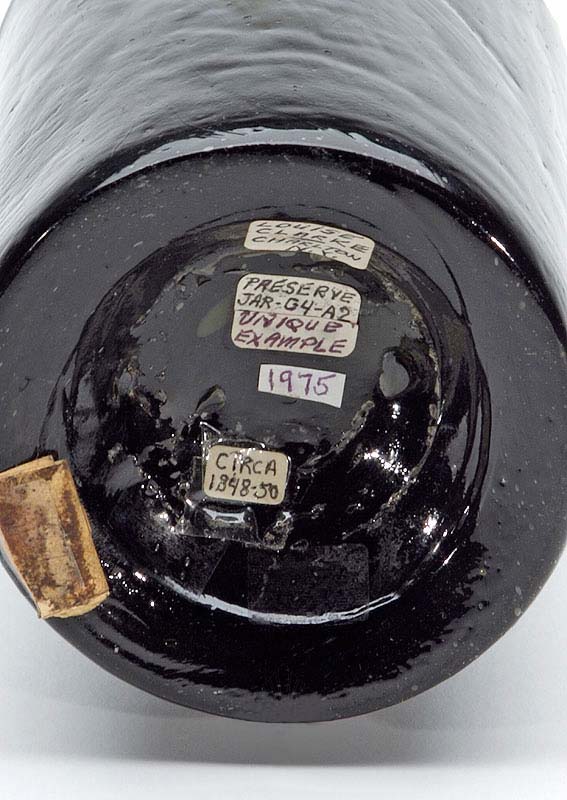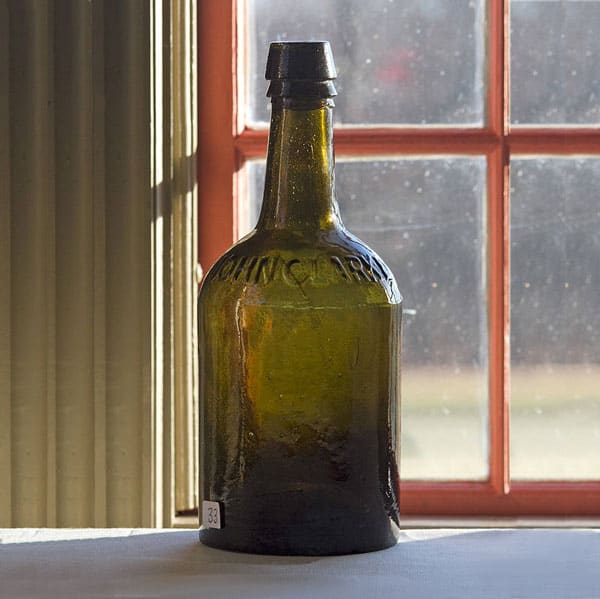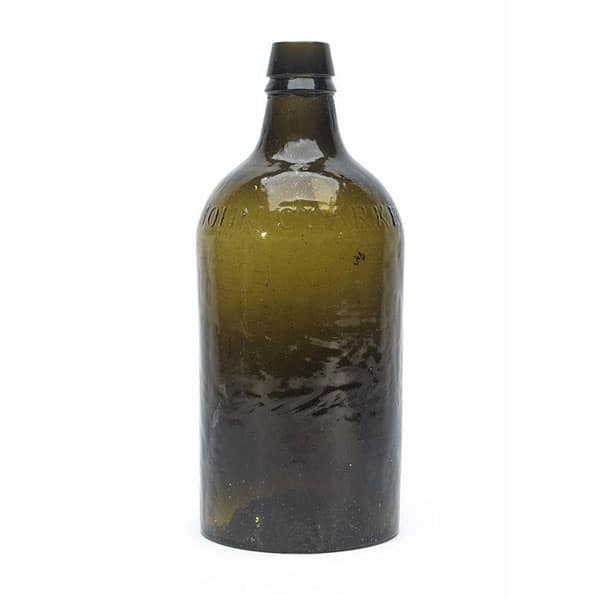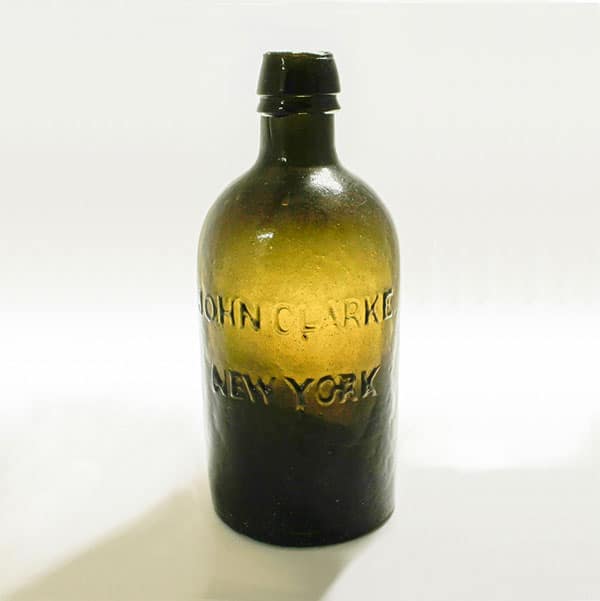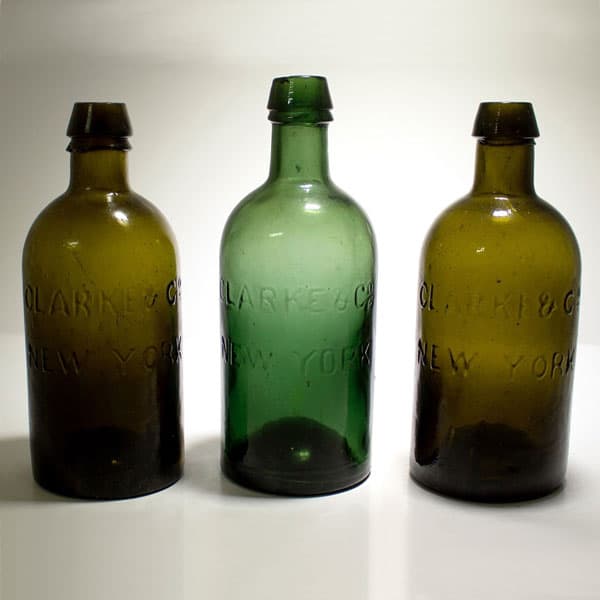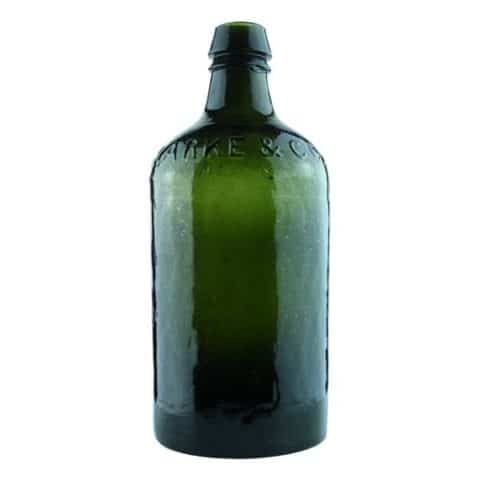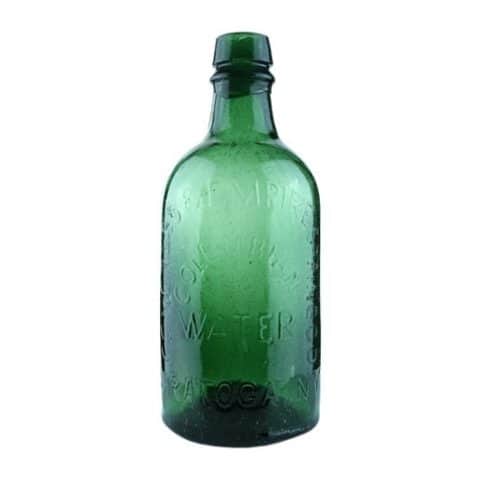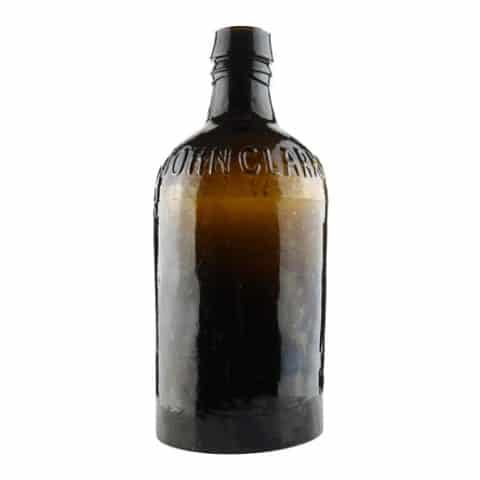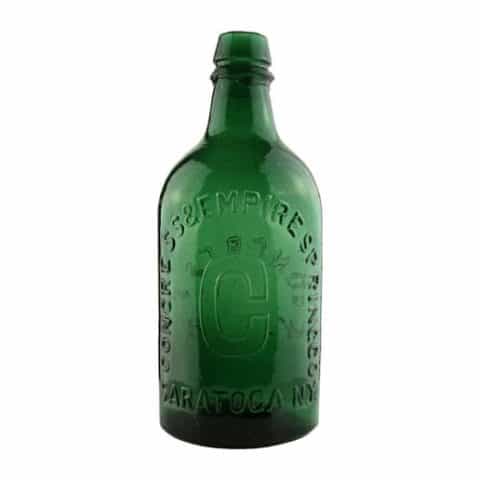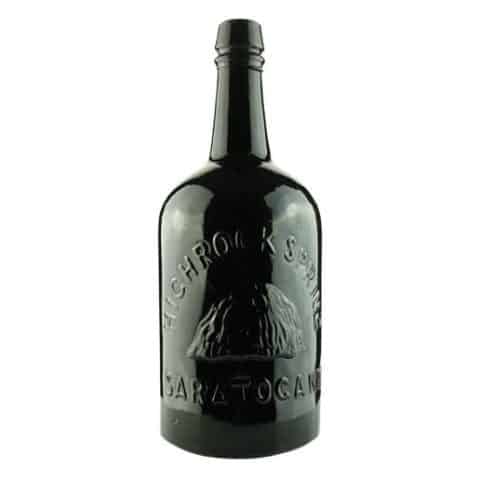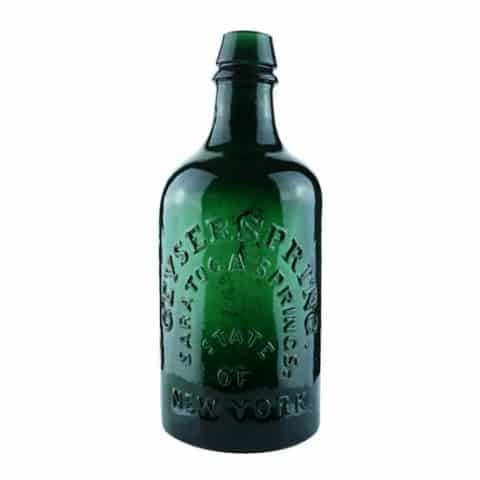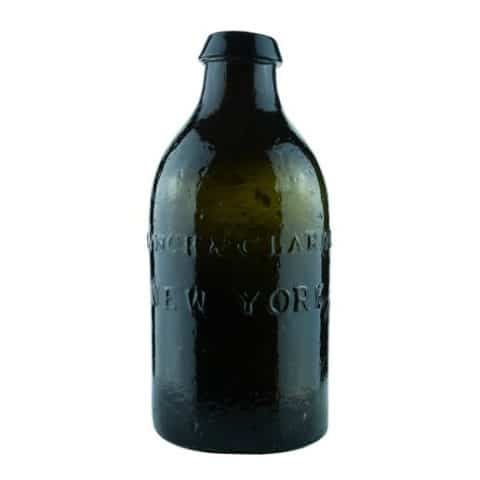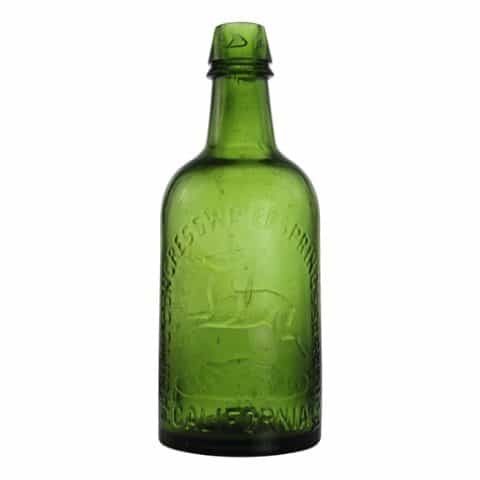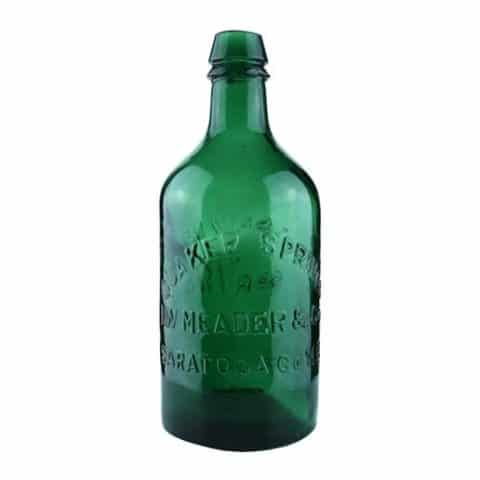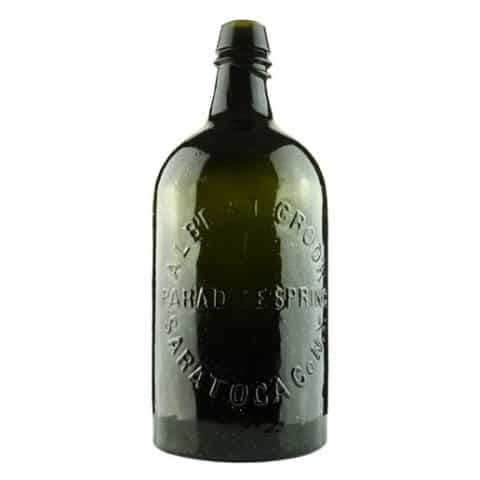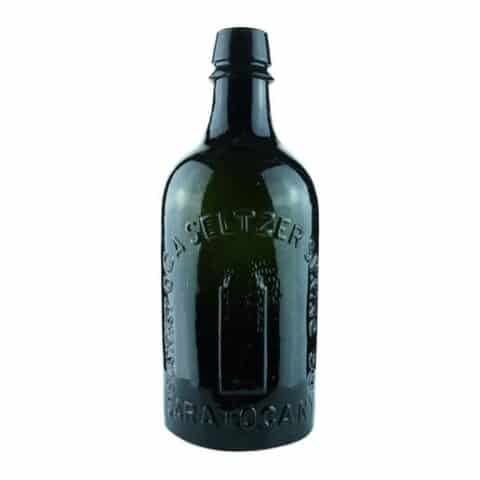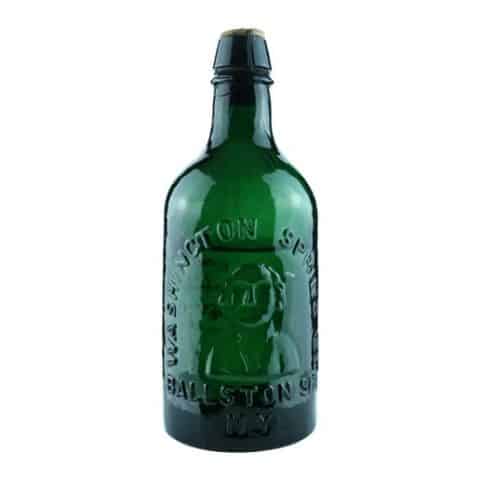John Clarke – New York
John Clarke
New.York
Dark Amber – Magnum Quart
Provenance: Dave Merker Collection
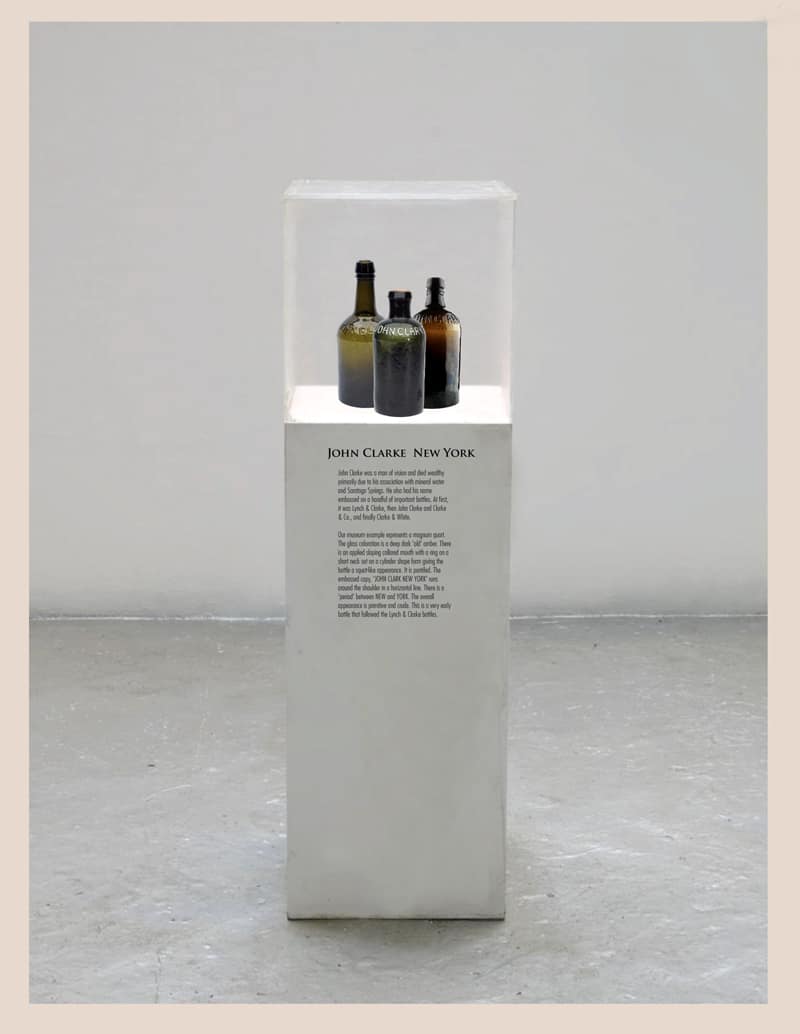
John Clarke was a man of vision and died wealthy primarily due to his association with mineral water and Saratoga Springs, New York. He also had his name embossed on a handful of important bottles. At first, it was Lynch & Clarke, then John Clarke and Clarke & Co., and finally Clarke & White.
Our museum example represents a magnum quart. The glass coloration is a deep dark ‘old’ amber. There is an applied sloping collared mouth with a ring on a short neck set on a cylinder shape form giving the bottle a squat-like appearance. It is pontiled. The embossed copy, ‘JOHN CLARKE NEW YORK’ runs around the shoulder in a horizontal line. There is a ‘period’ between NEW and YORK. The overall appearance is primitive and crude. This is a very early bottle that followed the Lynch & Clarke bottles.
John Clarke
John Clarke was born on May 12, 1773, in Yorkshire, England. Clarke immigrated to America and settled in New York City where he went into business with Thomas Lynch in 1808. Lynch was from Ireland and seemed to be more of a silent partner. Their Lynch & Clarke Soda Water Establishment was located at 254 Broadway on Wall Street. They promptly added mineral water to their repertoire as the new American springs were online in Ballston Spa and Saratoga Springs. No more imports from Europe. They were selling Washington, Congress and, High Rock Spring Water, among others by the bottle or by the dozen. Sometimes called “Doctor Clarke”, though that was just a courtesy title, it was claimed that Clarke and his partner were responsible for the first soda fountain in America.
In 1823, John Clarke purchased land and a farm in Saratoga Springs which included the Congress Spring which at that time, was a low-land swamp. He drained the swamp to create what would become Congress Park and in 1825 built a bottling plant near the Spring. The sale of Congress water continued from 1823, until the death of senior partner, Thomas Lynch, in June 1833; by which time the property at the springs had become of immense value, and was yielding a large income.
Clarke continued the business alone though legal problems would involve Clarke with heirs of the Lynch estate. See Bernard Lynch v. John Clarke and Julia Lynch.
John Clarke was married to Eliza (Bryer) White who was the widow of Charles White. After Lynch’s death in 1833, Clarke had his own bottles made. Many were produced at the Mount Vernon Glassworks in central New York. These were the “JOHN CLARKE” and the “JOHN CLARKE – NEW YORK” molds (Tucker C-3 through C-5).
Clarke would focus on Saratoga Springs and build a doric pavilion to cover Congress Spring. He also planned and named Circular Street and in 1832, built a Greek Revival mansion overlooking Congress Park and donated land to build an Episcopal church on the southeast corner of Circular Street and Union Avenue (then called East Congress Street). During this period, Clarke continued to accumulate land, primarily east of Congress Park.
John Clarke died on May 6, 1846. At that time, he owned nearly 1,000 acres of prime property. Saratoga Springs was growing rapidly and was now the resort of choice for the sick, invalids, the fashionable and wealthy. He was 73 years old.
After John Clarke’s death, his wife, Eliza then ran the company for several years and had bottles produced with the embossing ‘CLARKE & CO – NEW YORK’ (Tucker C-6 through C-9). See our Museum example. About 1856, a son from Eliza’s first marriage, William White became the owner of the company and had bottles produced under the name of “CLARKE & WHITE – NEW YORK” (Tucker C-10 & C-11). After William White died, Chauncy Kilmer bought a controlling share in 1865 and started the Congress & Empire Spring Company.
Primary Image: The John Clarke New York magnum quart imaged on location by the FOHBC Virtual Museum midwest studio led by Alan DeMaison.
Support: Reference to Collector’s Guide to the Saratoga Type Mineral Water Bottles, Donald Tucker, 1986
Support Image: [Example with cork and white painted JOHN CLARKE lettering] Auction Lot 46: “John Clarke” – “New – York” Mineral Water Jar Whimsey, probably Mount Vernon Glass Works, Vernon, New York, 1833-1846. Cylindrical, olive green, applied short wide sloping collared mouth – pontil scar, high shouldered quart. T#C4A2 Rare early mineral water with a mouth formed into a salt jar. Beautiful color, strong embossing, exceptional. Ex Louise Clarke, Charlton, New York collection, ex David Harrington, ex William Emberley, Gerry Strubel collection. – Norman C. Heckler & Company
Support Image: Auction Lot 33: “John Clarke” – “New-York” Mineral Water Bottle, probably Mount Vernon Glass Works, Vernon, New York, 1840-1844. Cylindrical, three-piece mold construction, medium olive amber, applied sloping collared mouth with ring – pontil scar, quart; (light exterior high point wear, 3/8 inch chip from lower mouth ring). T #C-4B Type 2 A scarce bottle with bold embossing. – Norman C. Heckler & Company
Support Image: Auction Lot 218: “John Clarke.” Mineral Water Bottle, America, 1860-1870. Cylindrical, medium to deep yellow olive, applied sloping collared mouth with ring – smooth base, high shouldered quart. T #C-3B Variant 1 A clean example that probably didn’t see much use. Fine condition. – Norman C. Heckler & Company
Join: The Saratoga type Bottle Collectors Society. Request information at jullman@nycap.rr.com



